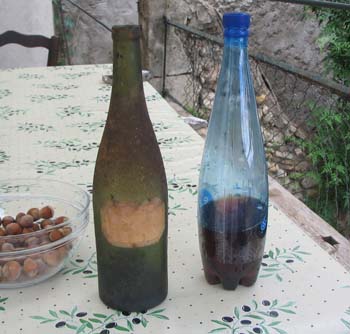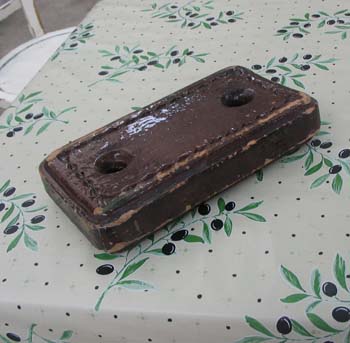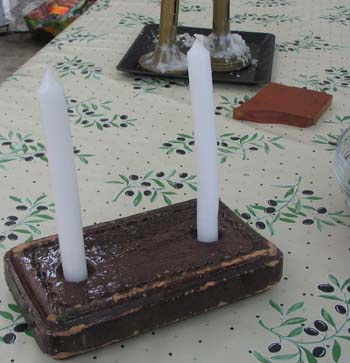When we went to the winegrowers dinner in the Cave Co-operative in the village we were lucky enough to be taken under the wing of a very pleasant couple, Patrick and Anne-Marie.
They were fans of Ireland and had spent lots of holidays here.
We established that he was a retired chemical engineer and she was a daughter of the village whose father and grand father had been local Vignerons and whose family has lived in the village for generations.
A couple of weeks later we met them in the market in the morning and they asked us to come to their house at midday on that day to have an aperitif.
We accepted with alacrity.
It seems that Anne –Marie had inherited the family home, which was a substantial one, in the heart of the village. It must at one time have had an immense garden as she pointed out the bits which had been colonised by members of the family who had built houses of their own. They had retained considerable space, enough for a large fruit garden, a swimming pool and all the original wine cellars which, in this case were above ground.
She brought us on a tour of these cellars, in which production had been stopped sometime in the sixties. For this reason they were a little like a museum of wines and winemaking with all the old tools still in position.
There was even a place with some old bottles were stacked on shelves heavily encrusted with the dirt of decades.
When I asked her how old these were she said she had no idea but why not lets take it up and see.
Patrick was elected to open this bottle but first himself and myself tried to decipher the label.
The date we established was 1895 and the only other word we could read was Noix.
They decided that therefore it must be a Vin de Noix, a fortified, wine based, Walnut flavoured aperitif.
They were both most un hopeful of it being drinkable as most of the early wines they had opened were far too musty to drink. Sometimes even when drinkable on opening they were often unpalatable within an hour of contact with the air.
The cork dissolved into crumbs on contact with the cork screw so we weren’t expecting the best, however our luck held, it was drinkable and furthermore very pleasant.
Anne- Marie poured half of it into a plastic water bottle and presented this and the original bottle to us as a present. (I had already confessed to my passion for old French glass)-an act of great kindness.

We stored the bottle lovingly in the presbytery, awaiting the day when it can be a part of the display for the Table d’Hote and the vin de noix we have brought back to Ireland with us. We may even get the courage to sip it soon.
They were able to do us another service when they came back to the presbytery on Monday to take aperitifs with us.
In the cellar, while rummaging around, I had found a strange sort of glazed and decorated brick which had two holes which I decided would make a perfect candlestick (it does)

Sile had suggested it might have been some sort of bed warmer which I doubted as I couldn’t imagine the reasons for the holes.
We showed it to our French friends who immediatly declared Sile correct.
Apparently the holes were for lifting it off the stove when hot with some sort of tongs.
I still think it makes a great candle stick though.


Comments
The comments are closed.